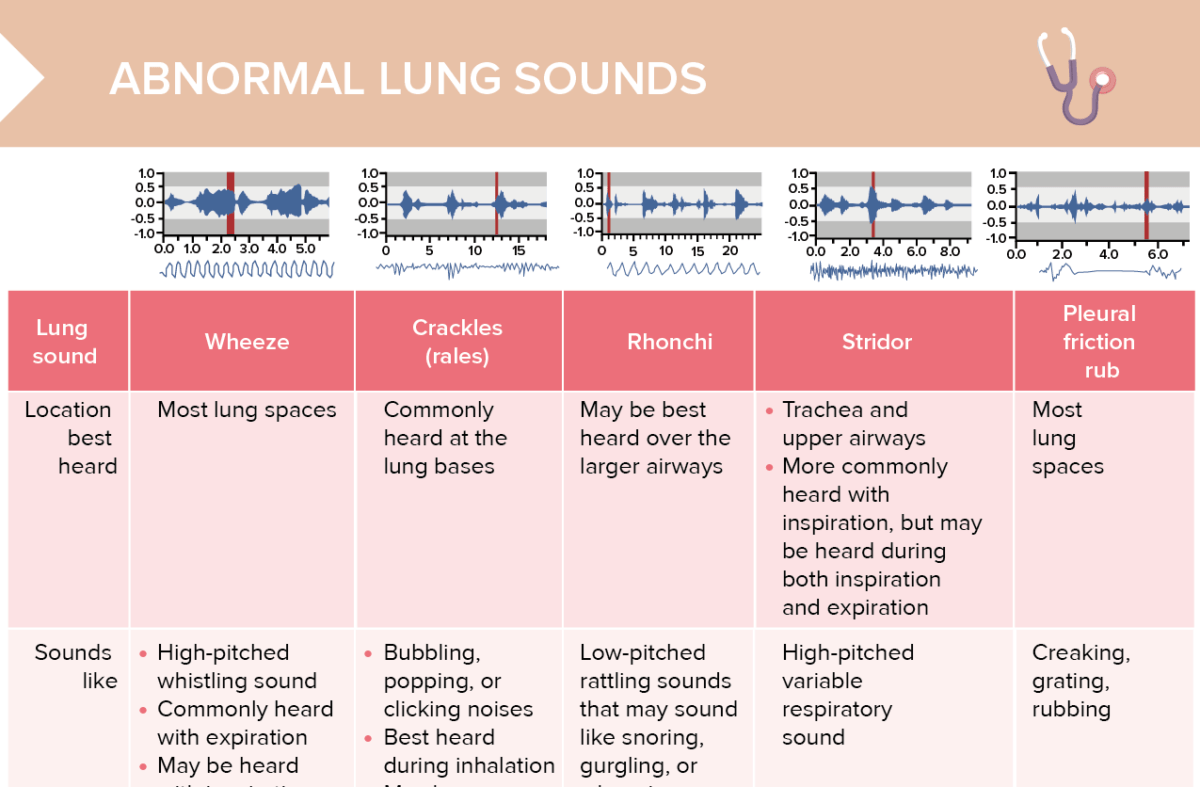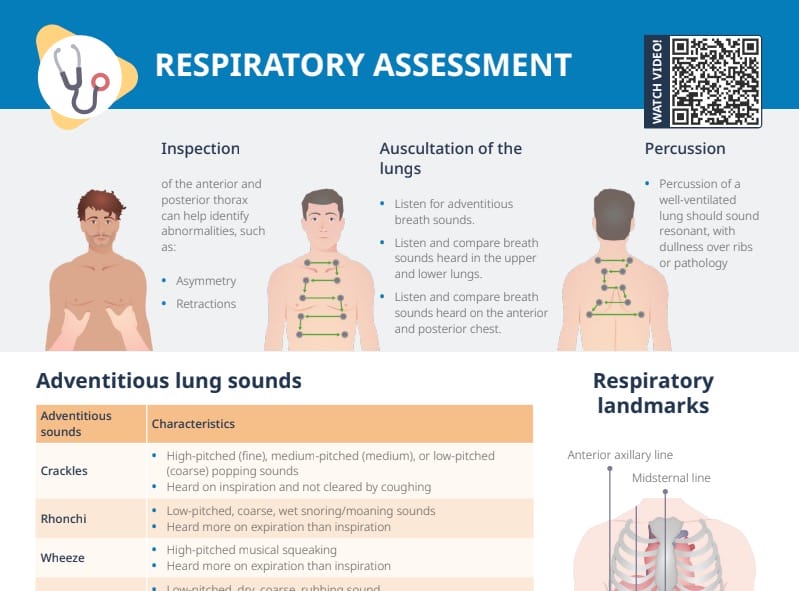How to do a nursing lung assessment
#1 Inspection
Inspect the anterior and posterior thorax to identify any abnormalities, such as:
- Asymmetry
- Retractions
#2 Auscultation
- Listen for adventitious breath sounds.
- Listen and compare breath sounds heard in the upper and lower lungs.
- Listen and compare breath sounds heard on the anterior and posterior chest.
#3 Percussion
Percussion of a well-ventilated lung should sound resonant, with dullness over ribs or pathology.

Lung assessment landmarks
In a lung assessment, landmarks help you correctly position your stethoscope to listen to lung sounds. Key landmarks include:
- Anterior axillary line
- Midsternal line
- Midclavicular line
- Posterior axillary line
- Anterior axillary line
- Midaxillary line
Lung sounds assessment: adventitious findings
If you hear any adventitious lung sounds during a respiratory assessment, you should document the finding, alert the healthcare provider for evaluation and orders, and monitor the patient’s respiratory status and vital signs.
Be mindful any of the following:
- Crackles
- Rhonchi
- Wheezing
- Pleural rub
- Stridor
Free bonus download

Overview of adventitious lung sounds
An overview of abnormal lung sounds, such as stridor and crackles
Free bonus download

Nursing assessment for pneumonia
Pneumonia risk factors, signs/symptoms and common assessment findings in pediatric clients with suspected pneumonia.
Breathing patterns
Evaluation of the breathing pattern is done during the auscultation of the lungs by listening to the breath sounds. Potential findings include:
- Eupnea: normal breathing pattern
- Tachypnea: increased respiratory rate
- Bradypnea: decreased respiratory rate
- Apnea: absence of breathing
- Cheyne-Stokes: gradual increases and decreases in respirations with periods of apnea
- Kussmaul’s sign: tachypnea and hyperpnea
Lung assessment documentation
Proper documentation of a lung assessment typically includes:
- When the assessment was performed
- Methods (auscultation, inspection, percussion)
- Breath sounds: Describe the type of sounds and their location.
- Symmetry: Document any differences between the left and right lungs.
- Respiratory rate and depth of breathing
- Any additional observations such as use of accessory muscles, chest deformities, or retractions
- Patient’s response: Note any signs of distress or changes after interventions.
- Any actions taken (like administering treatments)
- Follow-up orders received

